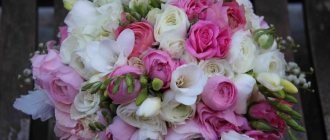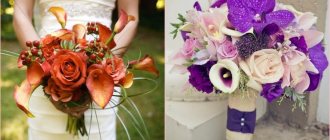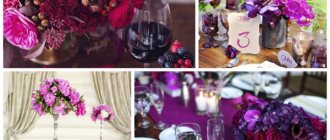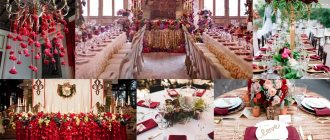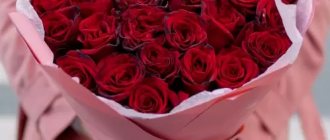Even looking at photos of daisies, not to mention “meeting” them in person, it’s not difficult to fall in love with this cute and modest flower. It is equally beautiful in mono bouquets and lush summer compositions with field or garden plants. The white beauty, with a golden sunny core, was considered by many peoples to be a symbol of deep tender feelings, including secret ones. It’s not for nothing that people used to guess about it: “Loves, doesn’t love...”, trying to find out what is hidden in the soul of the chosen one.
While exposing other people's secrets, the snow-white shy woman also has many of her own. It is not at all as simple as it seems at first glance.
Botanical certificate
Not all flowers colloquially referred to as “daisies” are actually daisies. The scientific name of the original plant is Matricaria, which is translated from Latin as “uterine grass”. The flower has long been famous for its strong anti-inflammatory properties and is still used to treat diseases of the female organs.
The genus Matricaria has about 20 species, among which the most famous is chamomile (Matricaria chamomilla). Cosmetic and pharmacological preparations, as well as health teas, are produced on its basis.
The healing herbaceous annual was previously collected in meadows and forest edges, but today it is cultivated on an industrial scale. In addition, some varieties are grown for decorative purposes, both for landscape decoration and for cutting. It is the small inflorescences of chamomile that can be seen in beautiful bouquets of rustic style, which is considered one of the leading trends today.
Matricaria chamomilla or, as florists call it, Matricaria, belongs to the Asteraceae family. She has many “relatives”, the resemblance to which is striking. For example, Leucanthemum, whose large inflorescences are up to 10 cm in diameter, are often used for wedding arrangements. On floristic sites it is presented as a large garden chamomile, but from a botanical point of view it is a different plant.
Slightly smaller in size is the Papavka (Anthemis), another representative of the Astrov family. It is good both in rockeries and bouquet compositions. Unlike cornflower, one navel plant has not one, but several flower baskets, which makes its similarity to Matricaria chamomilla intensify. In winter, so-called chamomile chrysanthemums are used for field bouquets, which differ from the original only in the greenish core and more rounded, wider petals.
The well-known name “chamomile” appeared in the everyday life of our ancestors in the 18th century. It is borrowed from the Polish language, where the plant was described as “the flower of romances,” that is, introduced by the Romans.
Symbolic meaning
Many peoples attribute divine properties to the simple Matricaria. For example, in Rus' it was one of the seven most important sacred plants, along with oak, hazel, hops, mistletoe, weeping grass (Loosestrife) and willow. It was believed that the flower was able to predict the future, so it was used for fortune-telling, although not for love, but for more significant ones - they determined the outcome of a battle, weather favorable for the harvest, and so on.
According to custom, wreaths were woven from cornflowers and navels for Ivan Kupala, which were then floated on the water to lead them to the betrothed. Chamomile tea was considered not only healing, but also protective - it was given to children to protect them from an evil eye. Matricaria was also grown in the garden and scattered at the doorstep, thereby driving away evil spirits from the home. It is also believed that it gives women special beauty. Which is understandable, because masks with plant essential oils have a powerful rejuvenating and restorative effect.
Chamomile is associated with true love, sincere long-lasting feelings, the strength of marriage bonds, and well-being.
No wonder it was chosen as a symbol of Family Day, which has been celebrated in Russia since 2008.
Not only the Slavs, but also the Egyptians, Greeks, and Scandinavians considered matricaria to be the bearer of the divine principle. She was called the flower of the majestic Odin, solar Ra, and beautiful Aphrodite. The Greeks have a beautiful legend about the appearance of a snow-white plant with a golden “eye”.
Once upon a time, a nymph fell in love with a handsome young shepherd and endowed him with the gift of healing people. The young man was very poor and his new skill could not have come at a better time. Cured patients paid a lot of money in gratitude for the help. At first the shepherd refused the generous offerings, but over time he began to take them for granted.
His wealth grew, but his soul became hardened, losing its best qualities. The young man forgot the nymph who loved him, believing that the attention of noble patronesses was now more important to him. The beautiful maiden wept bitterly. With each of her tears, a healing flower with a yellow center and white petals sprouted on the ground. And the shepherd, having parted with his beloved, lost his gift, after which people turned away from him. This is how the young man was punished for his infidelity and greed.
Pros and cons in arrangements
The inflorescences, reminiscent of clear stars, add special warmth and soulfulness to bouquet arrangements. They are appropriate as a gift for any event, except official celebrations. To present a chamomile bouquet, you don’t need to look for a reason at all; the desire to please the recipient is enough.
Garden varieties of Matricaria are almost universal. Arrangements from them are suitable for women of all ages. Flowers are equally appropriate in a gift basket for a little girl, in a wedding accessory for a newlywed, or in a bouquet for a mother, teacher or work colleague.
Chamomile mono-composition is not suitable as a gift to business partners or show business representatives if they do not have a warm relationship. The flower speaks of sincere gratitude and tender feelings, which is inappropriate in this situation.
Advantages:
- Excellent compatibility in arrangements with many garden and field plants.
- Pomp. You only need a few branches to create a truly huge bouquet of daisies that will make a stunning impression.
- No sharp, heavy aroma.
- Affordable price. Another bonus: charming flowers appear just in time for the wedding season and will help to significantly save on the cost, but not on the beauty of the bride’s bouquet arrangement.
- Originality. Among the numerous exotics that have “occupied” floristry, a simple armful of chamomile looks fresh and incredibly attractive.
The main disadvantage of wildflower varieties is their rapid withering when cut. However, hybrids and varieties grown in greenhouses are more resilient and can easily compete with their long-lived relatives: chrysanthemums or asters. To extend the life of delicate plants, it is recommended to add nutritional supplements or activated carbon and 1 tbsp to the water. l. salt.
Options for combining cornflowers with daisies and other flowers
The most popular option when using this or that type of plant is a monobouquet. With it, the flower arrangement includes only one variety of plants. At the same time, it can be used in several colors. For example, in the case of cornflowers, classic blue and lilac would be appropriate. This combination will help emphasize the tenderness of the image and the stability of the relationship.
- With eustoma is an original combination, since it combines garden and exotic plants. It is worth choosing a not too large eustoma so that it does not interrupt all the beauty of the cornflowers. Look out for blue flowers with white inflorescences. In this case, they will successfully harmonize with wildflowers. The role of eustoma in a bouquet is to create volume and additional airiness.
- With daisies, there is nothing more beautiful than a combination of several wildflowers at once. Please note that in the case of daisies we are talking about small buds, more like medicinal ones. With daisies you get an interesting combination, in which the bouquet looks as if it had just been picked by the bride from the fields. The composition is not loaded with additional decorative elements. All you need is a thick ribbon that is tied around the base of the bouquet itself.
- With roses is a royal plant that can create a good and interesting composition with any flower. It is important to choose the right color and tone of roses. It shouldn't stick out too much. In this case, several options are possible. The first is to emphasize the depth of color with cornflower blue, choosing the same shade. The second is to play with contrast by adding a delicate pastel pink to the main color. In this case, you will get a particularly delicate and romantic bouquet.
This is interesting: An autumn bouquet is a decoration for your wedding
Fashionable DIY chamomile bouquets
Representatives of the genus Matricaria look most impressive in mono-bouquets. The smaller the inflorescences of the plant, the more voluminous the composition should be and vice versa. Large-headed cornflower is suitable for classic round arrangements with a dense “cap”. It can be combined with spray roses or chrysanthemums, snapdragons, eustoma, and bells.
Matricaria is good in free-form bouquet compositions, next to peony roses, irises, cornflowers, craspedia, sunflowers, gerberas and hydrangea.
Field mix on a frame
Today, compositions on a frame are especially popular. This design successfully replaces both traditional baskets and paper packaging that is not always appropriate. The main advantage of the frame is that a chic bouquet, for example from the same field daisies, can be assembled using a minimum number of plants.
You will need:
- field navel, bells, yarrow, anise, spikelets (you can take any other herbs);
- gerbera wire (drut) D 1mm;
- paper twine, pruning shears, scissors.
Let's take 24 twigs of wood, with a standard length of 40 cm. We put them in a bundle and wrap them 1/3 with flexible braided wire. We bend the parts that remain free at an angle of 90º, spreading them in different directions so that a circle with 12 sectors is formed. We fold the rods in pairs to increase the rigidity of the frame.
We first decorate the handle with paper twine, and then begin to braid the wire base, as shown in the photo. Having reached approximately the middle, we stop. All that remains is to decorate the ends of each “beam” of wood and the frame is ready. We place the flowers in the spaces between the weavings, trying to ensure that the stems lie in a spiral.
We fasten the field composition with tape and decorate it with sisal or openwork linen braid. We trim the ends of the stems.
Garden arrangement with a low assembly point
From the most accessible plants, you can create absolutely enchanting bouquets, beautiful, with a mood that are pleasant to just hold in your hands. Matricaria or maiden tansy as a stand-in, tlaspi, viburnum, feather grass and pink bush carnation. This is quite enough to create a floral masterpiece.
How to convey the summer mood
There are 2 ways to collect a bouquet of daisies for your beloved girl in order to charge her with a sunny, positive mood. For both compositions the same set of ornamental plants is used, but the result is completely different.
You will need:
- Matricaria, cornflower, twigs of any garden shrub, wheat ears, cattail panicles, hosta leaves;
- pruning shears, raffia;
- burlap ribbon.
Option #1
Bouquets of field daisies usually have a round shape, but in this case the result is a one-sided composition - one of the bottom of the latest and brightest trends in floristry. It turns out that not only gladioli or large roses can look solemn.
The lower part of the chamomile stems must be thoroughly cleaned of leaves and small unopened buds. This will significantly extend the life of the flowers in the vase. We start the assembly with a bunch of cattails - it will add dynamics to the composition and make it asymmetrical.
We form the opposite side using shorter branches of a bush, in this case, hazel. Now that the “background” has been set, you can begin to create picturesque groups of matricaria and cornflower. It is necessary to take not one bud at a time, as usual, but several at once and, having collected them in a bunch, attach them to the arrangement using the spiral technique.
Matricaria and cornflower must support the main directions set by cattails and bush branches. Groups of them need to be placed at different heights to avoid excessive “smoothness”. The “back” of the bouquet arrangement should be flat, the flowers should be placed on only one side – the front side.
We make a cuff from hosta leaves. We also collect the spikelets in small groups and distribute them evenly among other plants. We decorate the reverse side with hosta leaves, giving it a more complete look. We secure the composition with raffia tape. We can assume that it is already ready, all that remains is to tie the linen braid.
But it’s much more interesting to add another bright “zest”, or rather strawberries - the image will turn out to be very summery, cheerful. We put large berries on bamboo skewers and place them between the flowers. We hide the holders behind the hosta leaves.
How this unusual bouquet of daisies turned out can be seen in the final photo:
Option No. 2
A simpler, but no less beautiful solution is to assemble a round arrangement. Despite the fact that it is done using the classic spiral technique, an unusual set of summer plants adds a “fresh touch”, helping to avoid stereotypes.
In this case, flowers and greenery are used individually, and not collected in groups. The center of the composition is formed from cattail, cornflower and wheat ears. Matricaria branches help to gain the required volume, and hazel and large aspidistra leaves create an expressive texture. We place the plants next to each other at an angle, alternating flowers and different types of greenery. We keep the composition just below the middle so that it turns out free, without a tight “cap”.
In a round arrangement, it is important to distribute the material evenly and place the plants at approximately the same level.
Having secured the stems first with raffia and then with linen ribbon, we begin to add the berries. We make sure that the skewers on which they are put are not visible.
Any girl with such a large, beautiful bouquet of daisies will feel like the queen of summer flora.
What types of daisy wedding bouquets are there?
Photo of a bride's wedding bouquet of daisies and cornflowers
Wildflowers will be a wonderful addition to the bride's image. Some of the most popular compositions from this plant are:
- Wedding bouquet of the bride from daisies and cornflowers . Suitable for a wedding celebration in a folk, country or marine theme. Field plants will look harmonious in the composition as well as on the field. For a summer wedding taking place in the open air, you can take this option as a basis.
Insert a couple of small “suns” into the groom’s boutonniere to match the image of the bride
- Wedding composition of roses and daisies . Surprisingly, romantic simple flowers go very well with the queen – the rose. Roses in light shades look great in a bouquet: cream, pink, yellow. No less attractive and delicate is a bouquet of tea roses and daisies. Florists create compositions from other colors of roses: red, orange, rainbow, etc. Designers recommend not packing these bouquets in cellophane or other wrappers. Just carefully trim the stems and tie them with ribbon. To avoid pricking your hands on the thorns, the tape can be tied in several layers. This bouquet is a perfect addition to a wedding dress.
Bridal bouquet of daisies and eustoma
- Composition for the bride with daisies and eustoma . Eustoma or lisianthus will look no less attractive than traditional cornflowers in a “foreigner” bouquet. Purple flowers will perfectly set off the white lace of the wildflowers, and you can put together a magnificent composition. For a small ball bouquet, choose lisianthus with small buds. To collect a large bouquet, eustoma with large inflorescences is perfect. These flowers will complement traditional compositions or any that your imagination is capable of.
Bridal bouquet of daisies and chrysanthemums
- Chamomiles and chrysanthemums . A large armful of daisies will add charm to any bride's look. To prevent the composition from seeming saturated, you can dilute it with chrysanthemum. The cost of this option will not be too high, because flowers are used that you can cut yourself in the field or pick from friends at the dacha. Chrysanthemums can be of absolutely any color. White, yellow, orange, pink and any other flowers are perfect. It is best to select plants with large heads that differ in size from wildflowers. This way the chrysanthemum will look as attractive as possible in the bouquet. Such a delicate bouquet is suitable for girls with fair skin and blondes.
Bridal bouquet of daisies and gerberas
- Gerberas and daisies . Bright gerberas filled with color and positivity will become a real decoration for a bouquet of daisies. These flowers can be used in absolutely any shade, they will look equally harmonious. A composition with gerberas is perfect for brunettes and blondes. 3 gerberas and a lot of daisies are enough to put together a beautiful, unique and bright bouquet.
Beautiful bridal bouquet of daisies and roses

